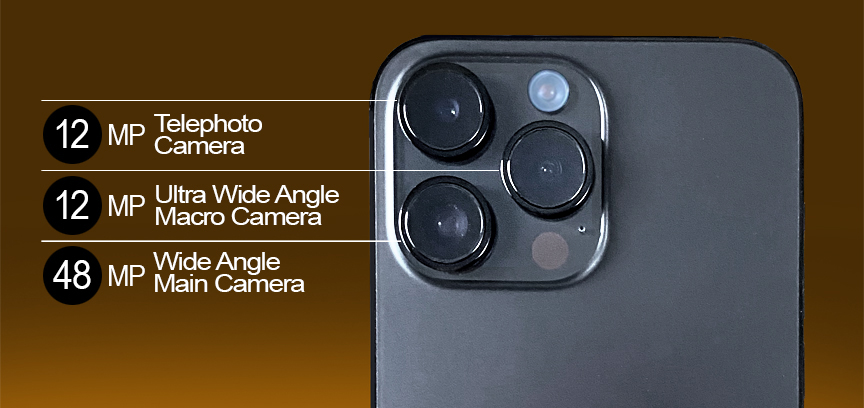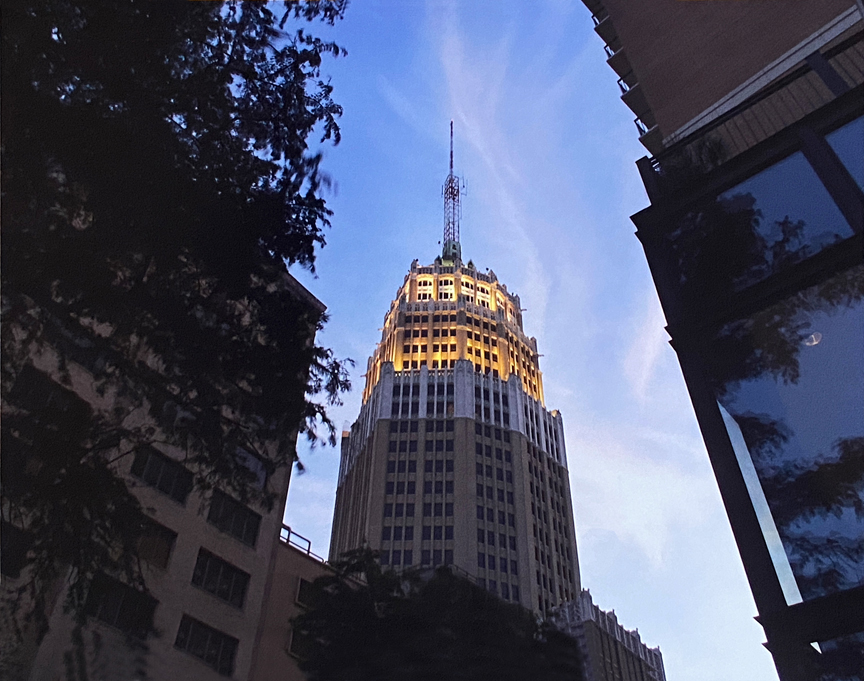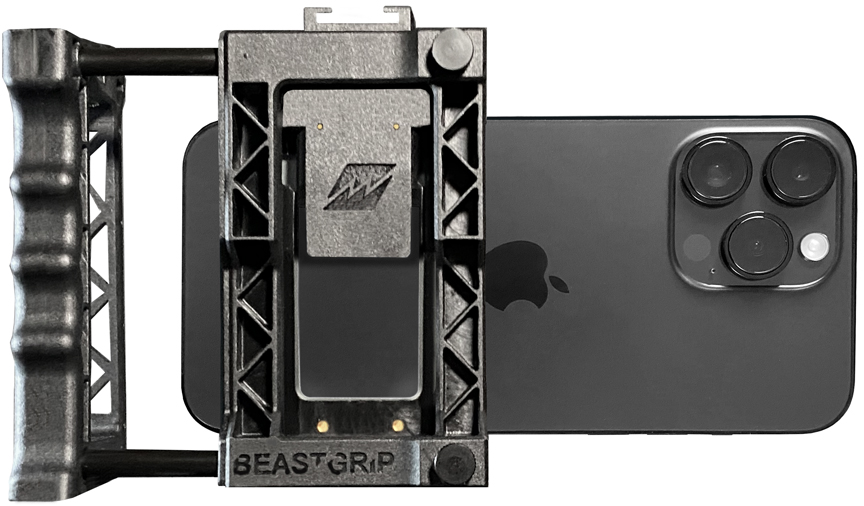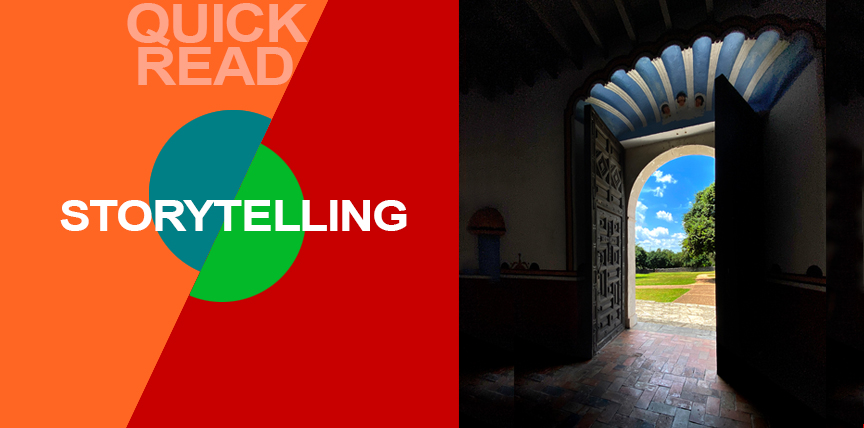
TECH DATA
Making the Case For Shooting on iPhone

WRITTEN & PHOTOGRAHED BY: STEVE HOLLOWAY
Not sure if iPhone has a place in your camera kit? Making the case for shooting on iPhone starts by looking at the early digital single lens reflex digital cameras. I’ve shot every digital single lens reflex camera starting with the first camera developed for commercial work, the Olympus E 10 up to the Canon 7D. Today, I shoot on iPhone exclusively.
Here’s Why: The biggest problem photographers deal with is seeing a great shot happen right in front of them and not having a camera with them. Ever since the iPhone 4 came out, that problem was solved for me. I had a camera with me all the time.
Its main advantage is size. It’s so compact, you always have it with you.
Even with its compact chassis, Apple manages to pack it full of features that make it exceptionally good at shooting with natural light in almost any environment.

How? The iPhone 14 Pro has three cameras each with a CMOS sensor one for each of its three lenses. A 48 megapixel wide angle main camera, a 12 megapixel 120-degree view ultra wide angle macro camera and a 12 megapixel telephoto camera.
Let me say it again, the 14 Pro has a 48 megapixel main camera.
That’s a huge upgrade in iPhone image capture. More detail. Better low light photography.
Here’s the impressive part. All three cameras are set to look at the exact same point, changing seamlessly from one camera to the other as you zoom in or out. When you capture an image, all three cameras capture the same image or video. Then Deep Fusion, Apple’s neural image processing technology, uses artificial intelligence to merge images from different exposures into a single image or video.
If a lens didn’t capture parts of the image properly, Deep Fusion replaces those pixels with pixels from one of the other cameras to create the highest quality image or video possible.
Plus Apple seamlessly integrates image stabilization, high dynamic range image capture, low light image exposure and shallow depth of field focusing effects into the iPhone Pro.
Here’s What May Be the iPhone’s Biggest Advantage
When you photograph people, pulling out a DSLR rig can be intimidating. Shooting with an iPhone is just the opposite. People are so accustomed to selfies and smartphones that an iPhone blends in with what’s going on, adding a level of spontaneity to capturing images.
Still, purist will rail against the iPhone to make the case for digital mirrorless or single lens reflex image capture. So how good a solution is shooting with an iPhone instead of a DSLR?
To answer that, I looked at the first digital camera I used as an assignment photographer, the Olympus E 10.
I started shooting with the Olympus E 10 in 2001, less than six months after its introduction.
The 4 megapixel E 10 was the first digital single lens reflex camera designed for commercial use. Its images had harsh skin tones and lacked all of film’s finesse and smoothness in faces, eyes, arms and hands.
That didn’t matter.
Starting literally the day the E 10 became available, every ad agency, design firm and commercial account insisted on digital images. Why? Because it eliminated the time involved and cost of film, processing, color separations and proofs. It was faster and cost less.
The E 10 was marketed as a true 4 megapixel image sensor camera. Significant because every other digital camera at the time that claimed to have a 4 megapixel image capture actually used a 1.7 megapixel image sensor and did an automatic, forced interpolation to save the image like it was a 4 megapixel capture.
Needless to say, the Olympus E10 images were the cleanest available.
Even so, at only 4 megapixels they still produced artifact-laden images full of digital noise and debris. Every arc, radius and rounded corner was made of noticeable stair step fractals that required a combination of blending and blurring to make them visually “disappear”.
Learning Photoshop on those images turned into an indispensable skill set for creating clean, detailed images that I still use almost everyday.
Comparing Old Tech and New Tech
The Olympus E10’s 4 megapixel CCD image sensor produced 7.5 MB RAW files and noisy 2.9 MB JPEG files. The images your iPhone captures produce large, 25 MB RAW files and 5.5 MB JPEG files that open as 34.9 MB images producing 300dpi, 10.08″ x 13.44″ prints straight out your phone! Straight out of your pocket!
With off board AI resizing you can make prints as large as you want. And, since these are CMOS sensors, the images are almost effortless to work on in post production.

CUTTING EDGE COMMUNICATIONS WEB IMAGE PHOTOGRAPHED WITH THE OLYMPUS E 10 / © STEVE HOLLOWAY

THE TOWER LIFE BUILDING PHOTOGRAPHED WITH THE OLYMPUS E 10

BJORNS, NORTH STALL MALL BOOTS AND TRINITY BAPTIST CHURCH / PHOTOGRAPHED WITH THE OLYMPUS E 10
ARCHITECTURAL IMAGES PHOTOGRAPHED FOR THE TAYLOR WEST BELDON ROOFING CAPABILITY BROCHURE / © STEVE HOLLOWAY
The iPhone 4 was my first smartphone. Why?
If you remember, I said the problem of not having a camera with me all the time was solved with the iPhone 4. So where was I when all the prior iPhones came out?
First I have to admit that, when it comes to cameras, I’m an early adopter. I was always ahead of the curve. It made my job easier and gave me an competitive advantage in the agency, design firm and commercial account markets.
But when it came to cell phones, well, I was not only a late adopter, I was a resistant, reluctant adopter. I still remember the first cell phones. Very expensive “bricks” with about 3 hours of talk time. I just couldn’t justify the expense.
It wasn’t until about the time flip phones came along and were easily available and affordable, that I got my first cell phone. Still, I looked at cell phones as phones. You receive calls, you make calls plus you get voicemail in the deal.
Then My Last Flip Phone Quit Working
And there weren’t any more flip phones available. Not one. Not anywhere. So I was dragged, kicking and screaming, into then current technology.
Once I had my iPhone 4 I had a camera with me all the time. Still, shooting on iPhone wasn’t a conscious shift. For personal work, I found myself pulling out the iPhone 4 more and more when my DSLR was in the car or at home.
Next up, the iPhone 6
By the time I upgraded to the iPhone 6, not only had I realized the advantage of having the camera with me all the time but I hardly used my laptop anymore since I was getting all my emails and doing all my internet searches/access there too.

THE AUSTIN SKYLINE / © STEVE HOLLOWAY
My timing couldn’t have been better. The iPhone 6 was one of the first smartphones that started getting used as viable image capture for video projects and it had Shot on iPhone 6 billboards created from users’ images (While the Austin skyline image above wasn’t used on an Apple billboard, it was shot on my iPhone 6).
Over Time, My DSLR Began to Feel Like an Anchor
What was once an essential tool became more like an anchor I had to drag around EVERYWHERE. And not just the camera. A couple of lenses, a flash, batteries, chargers and a tripod had to ride along.
The last three years before I retired I went from having a DSLR with me all the time when we traveled to packing the DSLR, moving it to the room and taking it very occasionally to packing the DSLR, moving it to the room only leaving it there.
Again, it wasn’t a conscious shift to shooting with the iPhone for personal work. It was a shift that occurred because everything I would have unpacked the DSLR for before, I capturing with my iPhone.
Today, I shoot an iPhone 14 Pro Max
Remember that game changer, the Canon EOS 10D, 6.3 megapixel CMOS image sensor? The 14 Pro Max has two 12 megapixel CMOS image sensors and a 48 megapixel CMOS image sensor.
Let me say that again, the iPhone 14 Pro Max has two 12 megapixel CMOS image sensors and a 48 megapixel CMOS image sensor!
That’s twice to over six times the size of the image capture sensor on my first CMOS Canon SLR. The iPhone 14 Pro Max has a wide angle lens camera with a 48 megapixel image sensor and super wide angle macro and telephoto lenses with 12 megapixel image sensors. And it’s always with me! All the time!

MY iPHONE 14 PRO MAX / BEASTGRIP RIG PROVIDES A FIRM GRIP POINT, ACCEPTS AN ON-CAMERA LIGHT ON TOP AND A QUICK-RELEASE PLATE ON THE BOTTOM TO ATTACH TO A TRIPOD OR BOOM ARM
Now, before I start getting emails about the physical size of the iPhone sensors vs. an APS-C or full frame sensor, let me say that while the smaller sensor has smaller pixels, current technology still manages to put 12 megapixels each on two of the iPhone sensors and 48 megapixels on the third. 12 and 48 megapixels!
To address the limitations of a smaller sensor size, Apple has seamlessly integrated high dynamic range image capture, image stabilization and Deep Fusion, Apple’s neural image processing technology that uses artificial intelligence to create the high quality images or videos, into the background.
Are there images that would benefit from a larger sensor? Of course. But everything I’ve needed to shoot for Drop Top Road Trips, I’ve captured easily with my iPhone 6 then the 11 Pro Max and now my 14 Pro Max. Cars, food, landscapes, driver POV images, road sides from moving vehicles, copy work, still lifes, portraits, high angle shots, low angle shots and architectural interiors/exteriors.
The overriding fact is having a camera with you, any camera, is better than not having a camera at all
Sure, having the newest, most advanced camera with you at all times would be the perfect solution. But the reality is that it’s the photographer who makes the equipment they have on hand produce the result they are looking for. And, if you don’t have the skill set to do that, a different camera won’t save you.
Having worked through the evolution of the first digital cameras as a fulltime shooter, I know for a fact that if the only digital cameras available today were iPhones, every agency, design firm and commercial account would insist on iPhone digital image capture.
Still Not Sure?
Get a creator’s perspective. Read the interviews with Grieg Fraser, the cinematographer behind (to name just a few) Zero Dark Thirty, Dune and The Batman. Fraser talks about how technology is evolving and about shooting on iPhone.
Or watch the video Red Dragon or iPhone 12? Where Tomorrow’s Filmmakers compare a $30,000 Red Dragon to an iPhone 12 by cutting scenes together from each but not identifying the image sources before hand. Then going on to show techniques to achieve different film effects. You be the judge, but, to my eye, the iPhone holds its own.
Or consider what Annie Leibovitz said in a 2019 San Antonio Report interview by Senior Reporter Nicholas Frank.
“I’ve always believed that it’s about content. It has nothing to do with the camera,” she said.
And she repeated her chief advice to aspiring photographers: “I’ve said a million times that the best thing a photographer can do is stay close to home and start with friends and family. … What I’m really saying is you should take pictures of something that means something to you.”
Leibovitz finished the interview talking about cellphone cameras, “You can’t underestimate the ease, and just having something in your pocket and just taking a picture.”


QUICK READ: STORYTELLING

Using Doorway Imagery to Tell a Story
Doorways create transitional images that become metaphors for change. They symbolize connecting one space with another, bringing two sides together, moving from dark to light, inside to outside.
A bride and groom walking arm in arm as they exit through the church doorway after their wedding tells a story of change. Change from single to married. Change that marks the beginning of their married life. A story in a single image.
Church Doors. On the way home from our Back to the Beach road trip, we stopped in Goliad, Texas to photograph Mission Espiritu Santo. As soon as I saw the front doors I started looking for where I wanted to put the camera.
I found a camera position near eye level that captured the light spilling into the room from outside. I exposed for the outside light by tapping on screen to lock exposure and focus. Captured on an iPhone 11 Pro Max with Beastgrip and Bluetooth shutter release rig.

- Shot on iPhone Toolbox [ Homepage ]
- Two Essential Skills [ Change How You Shoot ]
- Two iPhone Features People Take for Granted
- Toolbox How To Guides [ 27 Deep Dive Guides ]
- Translate your Skill Set into a Working Process
- IDEA FILE Shot on iPhone Gallery One
- IDEA FILE Road Portraits One
- IDEA FILE Road Portraits Two
- Digital Evolution
- From The Batman to Shooting on iPhone
- Making the Case For Shooting on iPhone
- Camera and Light Kit Ideas
- Copied on iPhone
- The Power of One Idea
- Becoming Proficient in Post Production
- Designing with Type
- Learning From Cinema
- How the Three Lenses on iPhone Work
- Here are My Influences [ Who are Yours? ]
- Steve Holloway [ Photographs ] Pre iPhone
- Steve Holloway [ Memoirs ]

